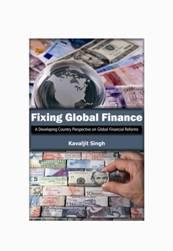Fixing Global Finance. A Developing Country Perspective on Global Financial Reforms
Kavaljit Singh, Madhyam (New Delhi) and SOMO (Amsterdam), 2011

The financial crisis which erupted in mid-2007 has been widely viewed as the most serious financial crisis since the Great Depression of the 1930s. The crisis which originated in developed countries quickly spread to developing countries and the rest of the world. The turbulence in financial systems was followed by a significant reduction in real economic activity throughout the world. The crisis has highlighted that financial markets are inherently unstable and market failures have huge economic and social costs. The crisis has renewed debate on the role of global finance and how it should be regulated.
The aim of this book is to encourage and stimulate a more informed debate on reforming the global finance. It examines recent developments and problems afflicting the global financial system. From a developing country perspective, it enunciates guiding principles and offers concrete policy measures to create a more stable, equitable and sustainable global financial system. Several innovative measures have been proposed to reform the global finance and to ensure that it serves the real economy.
“The book is an outstanding contribution to the literature on global financial crisis. It is objective, sensitive, sensible, scholarly and yet eminently readable, with unique focus on developing countries. It should be a compulsory reading for policy makers and market participants.” –
Dr. Y. V. Reddy, Governor, Reserve Bank of India (2003-08)
Contents :
1. The Unfolding of Global Financial Crisis
2. The Global Financial Crisis and Developing Countries
3. Recent Trends in International Finance and Developmental Implications
4. The Rise of New Global Players
5. Financial Derivatives and the Globalization of Risk
6. Global Financial Crisis and India
7. Guiding Principles for Building a Stable Global Financial System
8. Global Financial Reforms and Developing Countries
9. Global Financial Reforms and Civil Society : A Bottom up Approach
